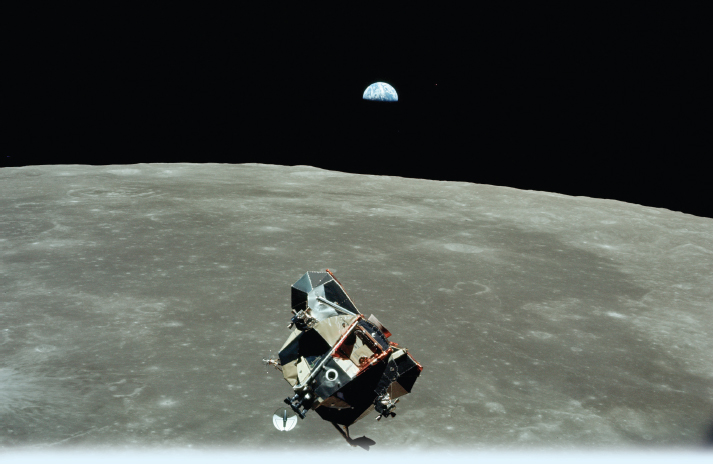Introduction
144
- 2.1Rates of Change and the Derivative
- 2.2The Derivative as a Function
- 2.3The Derivative of a Polynomial Function; The Derivative of \(y=e^{x}\)
- 2.4Differentiating the Product and the Quotient of Two Functions; Higher-Order Derivatives
- 2.5The Derivative of the Trigonometric Functions
- Chapter Review
- Chapter Project
The Apollo Lunar Module “One Giant Leap for Mankind.”

On May 25, 1961, in a special address to Congress, U.S. President John F. Kennedy proposed the goal “before this decade is out, of landing a man on the Moon and returning him safely to the Earth.” Roughly eight years later, on July 16, 1969, a Saturn V rocket launched from the Kennedy Space Center in Florida, carrying the Apollo 11 spacecraft and three astronauts—Neil Armstrong, Buzz Aldrin, and Michael Collins—bound for the Moon.
CHAPTER 2 PROJECT
In the Chapter Project on page 195 at the end of this chapter, we explore some of the physics at work that allowed engineers and pilots to successfully maneuver the Lunar Module to the Moon’s surface.
The Apollo spacecraft had three parts: the Command Module with a cabin for the three astronauts; the Service Module that supported the Command Module with propulsion, electrical power, oxygen, and water; and the Lunar Module for landing on the Moon. After its launch, the spacecraft traveled for three days until it entered into lunar orbit. Armstrong and Aldrin then moved into the Lunar Module, which they landed in the flat expanse of the Sea of Tranquility. After more than 21 hours on the surface of the Moon, the first humans to touch the surface of the Moon crawled back into the Lunar Module and lifted off to rejoin the Command Module, which Collins had been piloting in lunar orbit. The three astronauts then headed back to Earth, where they splashed down in the Pacific Ocean on July 24.
Chapter 2 opens with an investigation of mathematical models involving change. First we consider velocity. Then we return to the tangent problem to find an equation of the tangent line to the graph of a function \(f\) at a point \( P=(c, f( c) ) \). Remember in Section 1.1 we found that the slope of a tangent line was a limit, \[ m_{\tan }=\lim\limits_{x\rightarrow c}\dfrac{f(x)-f(c)}{x-c} \]
This limit turns out to be one of the most significant ideas in calculus, the derivative.
In this chapter, we introduce interpretations of the derivative, consider the derivative as a function, and consider some properties of the derivative. By the end of the chapter, you will have a collection of basic derivative formulas and derivative rules that will be used throughout your study of calculus.